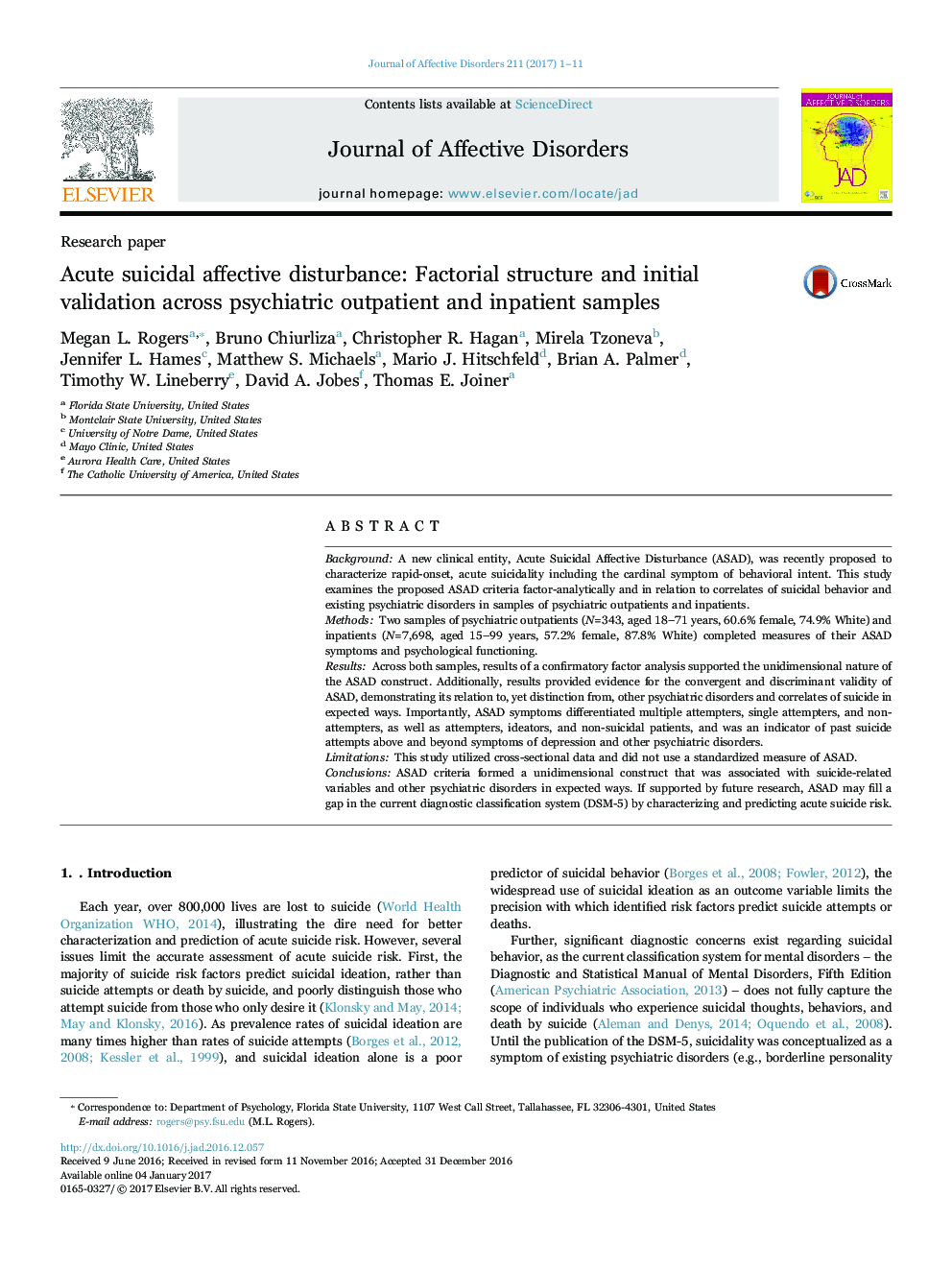| Article ID | Journal | Published Year | Pages | File Type |
|---|---|---|---|---|
| 5721899 | Journal of Affective Disorders | 2017 | 11 Pages |
â¢There exists a diagnostic void with regard to acute suicide risk.â¢Acute Suicidal Affective Disturbance (ASAD) has been proposed to fill this void.â¢Results of a CFA indicated that ASAD constructs fit a one-factor model.â¢ASAD was correlated with other psychological variables in expected directions.â¢ASAD predicted past suicide attempts above depression and other disorders.
BackgroundA new clinical entity, Acute Suicidal Affective Disturbance (ASAD), was recently proposed to characterize rapid-onset, acute suicidality including the cardinal symptom of behavioral intent. This study examines the proposed ASAD criteria factor-analytically and in relation to correlates of suicidal behavior and existing psychiatric disorders in samples of psychiatric outpatients and inpatients.MethodsTwo samples of psychiatric outpatients (N=343, aged 18-71 years, 60.6% female, 74.9% White) and inpatients (N=7,698, aged 15-99 years, 57.2% female, 87.8% White) completed measures of their ASAD symptoms and psychological functioning.ResultsAcross both samples, results of a confirmatory factor analysis supported the unidimensional nature of the ASAD construct. Additionally, results provided evidence for the convergent and discriminant validity of ASAD, demonstrating its relation to, yet distinction from, other psychiatric disorders and correlates of suicide in expected ways. Importantly, ASAD symptoms differentiated multiple attempters, single attempters, and non-attempters, as well as attempters, ideators, and non-suicidal patients, and was an indicator of past suicide attempts above and beyond symptoms of depression and other psychiatric disorders.LimitationsThis study utilized cross-sectional data and did not use a standardized measure of ASAD.ConclusionsASAD criteria formed a unidimensional construct that was associated with suicide-related variables and other psychiatric disorders in expected ways. If supported by future research, ASAD may fill a gap in the current diagnostic classification system (DSM-5) by characterizing and predicting acute suicide risk.
